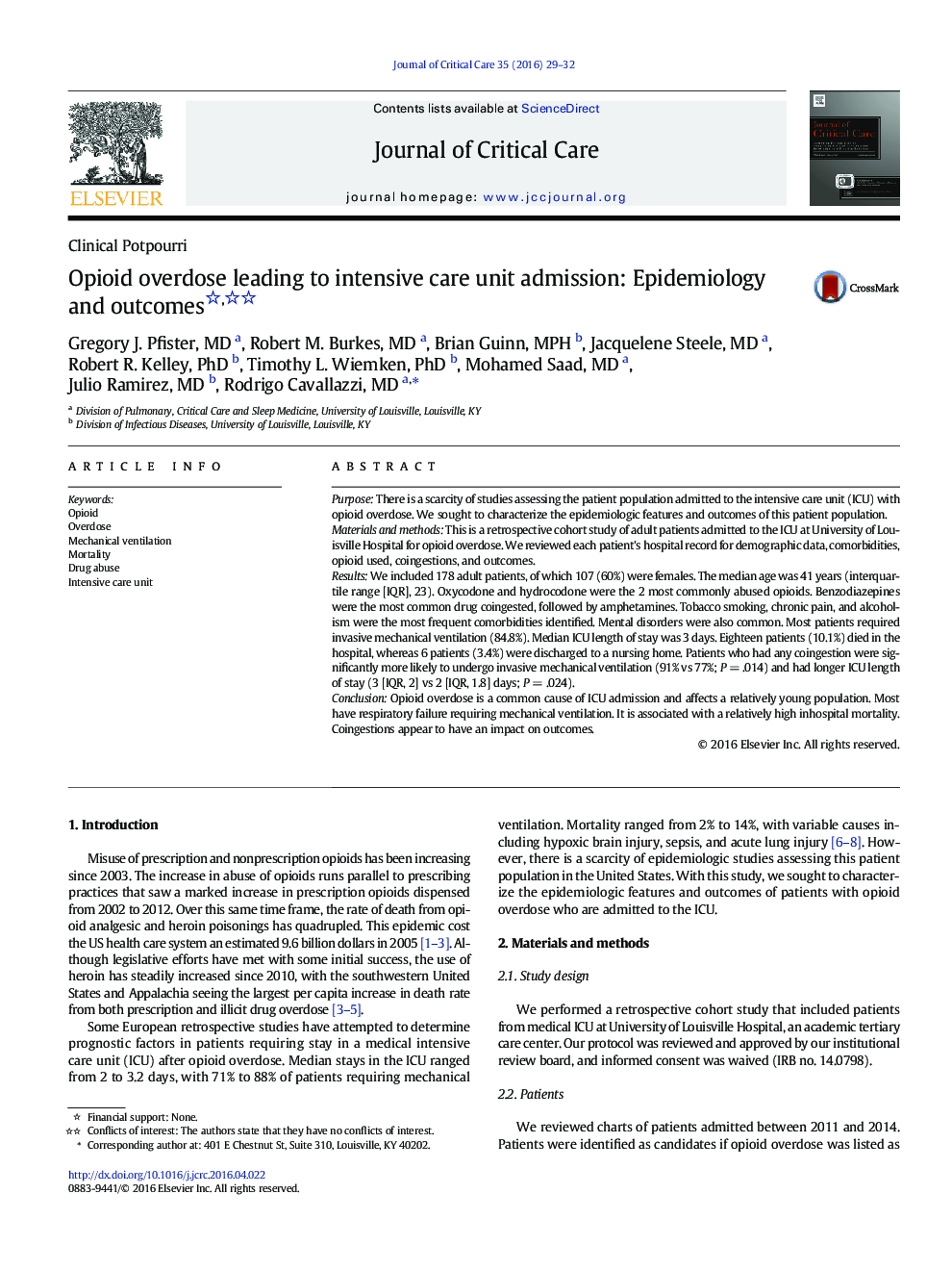| Article ID | Journal | Published Year | Pages | File Type |
|---|---|---|---|---|
| 2764433 | Journal of Critical Care | 2016 | 4 Pages |
PurposeThere is a scarcity of studies assessing the patient population admitted to the intensive care unit (ICU) with opioid overdose. We sought to characterize the epidemiologic features and outcomes of this patient population.Materials and methodsThis is a retrospective cohort study of adult patients admitted to the ICU at University of Louisville Hospital for opioid overdose. We reviewed each patient's hospital record for demographic data, comorbidities, opioid used, coingestions, and outcomes.ResultsWe included 178 adult patients, of which 107 (60%) were females. The median age was 41 years (interquartile range [IQR], 23). Oxycodone and hydrocodone were the 2 most commonly abused opioids. Benzodiazepines were the most common drug coingested, followed by amphetamines. Tobacco smoking, chronic pain, and alcoholism were the most frequent comorbidities identified. Mental disorders were also common. Most patients required invasive mechanical ventilation (84.8%). Median ICU length of stay was 3 days. Eighteen patients (10.1%) died in the hospital, whereas 6 patients (3.4%) were discharged to a nursing home. Patients who had any coingestion were significantly more likely to undergo invasive mechanical ventilation (91% vs 77%; P = .014) and had longer ICU length of stay (3 [IQR, 2] vs 2 [IQR, 1.8] days; P = .024).ConclusionOpioid overdose is a common cause of ICU admission and affects a relatively young population. Most have respiratory failure requiring mechanical ventilation. It is associated with a relatively high inhospital mortality. Coingestions appear to have an impact on outcomes.
